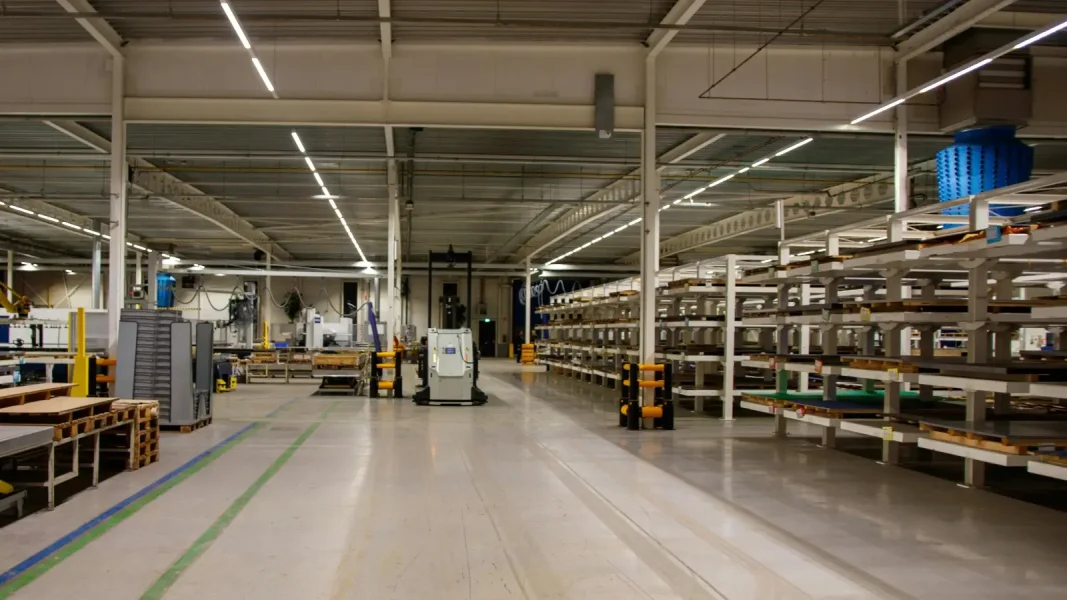In the retail sector, supply chain optimization is at the crossroads of several challenges: operational efficiency, customer satisfaction, cost reduction, profitability, compliance with CSR commitments, …
Logistics performance has a clear impact on a retailer’s economic performance. Against this backdrop, logistics managers and senior management alike are keeping a close eye on key performance indicators (KPIs).
These KPIs provide a panoramic view of operational performance. They facilitate informed decision-making, help optimize processes and improve customer satisfaction.
In this article, discover the main supply chain KPIs and our advice on how to use, combine and understand them.
Why track supply chain KPIs?
Logistics KPIs (Key Performance Indicators) are tools for evaluating and reporting on the supply chain solution.
They help teams to ensure the health and performance of the supply chain as a whole or, in a more granular way, of specific links in the supply chain.
Like all indicators, they are the counterpart to the objectives defined for supply chain optimization. As soon as you set a goal, you need to evaluate whether or not you’re achieving it. KPIs serve this evaluation function.
They also have a reporting function. You can share them with other stakeholders, both internal and external, to try and collectively identify areas for improvement and action plans.
Supply chain indicators meet 4 major challenges:
- Optimize operations: indicators help supply chain managers and their teams to monitor and evaluate the performance of their operations. Tracking over time helps identify trends and potential malfunctions. When performance drops, teams can react quickly and make the necessary adjustments.
- Inform decision-making: the data provided by KPIs gives decision-makers a solid basis for strategic decision-making. With this data, they can identify growth opportunities, anticipate challenges and allocate resources effectively to maximize efficiency and profitability.
- Control logistics costs: the supply chain is subject to high expectations in terms of profitability. KPIs help control logistics costs. They make it easier to identify inefficiencies and waste.
- Improving customer service and satisfaction: an efficient supply chain means product availability for customers. KPIs also help optimize delivery times, order accuracy and product availability, to ensure that customer expectations are met.
Top 5 supply chain KPIs to track
Stock levels
Optimizing inventory levels is a key issue for all supply chain teams. Storage generates costs (storage, monitoring, etc.). Overstocking leads to loss of profitability. On the other hand, do you also want to avoid stock-outs, especially on products that are not or are difficult to substitute?
Consequently, stock levels are a key indicator to monitor. It inevitably comes into the equation when you have to make trade-offs concerning your security stock. For example, you need to be able to answer questions like: “Can you lower your stock levels without degrading availability?
Availability rate
Availability is closely linked to storage. It refers to the proportion of active part numbers immediately available to customers. It can therefore be used to assess the availability of products in stock at time T.
This KPI enables you to measure the availability of your products and helps reduce the risk of stock-outs. If a product’s stock is low, you may decide to replenish it to ensure availability.
Logically, you’ll want to make sure that the most important products are available, so you’ll want to assess the safety stock needed to ensure availability.
With a view to controlling costs, you need to find the right balance, by answering the following question: how can you optimize your availability rate while reducing (or not increasing) your stock levels?
Breakage rate
When you sell perishable products, another indicator comes into play: the breakage rate.
Scrap refers to all the products that the store has not been able to sell, or has not been able to sell at its “normal” price. On average, it is estimated that one out of every 7 fresh products delivered to stores expires before being sold. The cost of breakage and its impact on store sales and earnings are considerable.
As a result, a trade-off is necessary between customer availability and breakage. If you increase availability on perishable products, you risk increasing your breakage rate. But if you degrade your availability, you lose sales and margin.
Here again, we enter into a logic of equilibrium, but this time with 3 factors: stock level, availability rate and breakage rate.
Supplier order compliance
Supplier order compliance is an indicator focused on the procurement and replenishment side. The purpose of this indicator is to measure the order failure rate. These failures are generally due to non-compliance with agreements made with the supplier.
This KPI will enable you to assess the reliability of suppliers in terms of quality, on-time delivery and quantities ordered. It includes sub-indicators such as the product conformity rate or the merchandise return rate.
In the same vein, we can also measure indicators linked to the order engine:
- Order suggestion reliability : This KPI measures whether order suggestions are respected in their entirety, or whether adjustments are made by end-users. If orders are modified, you can investigate the reasons for these adjustments.
- The control engine utilization rate evaluates the efficiency of the control engine used in the procurement process. It measures the ratio of orders generated to orders actually placed. It provides an overview of internal process efficiency.
Forecast accuracy
Forecast accuracy is an indicator used to assess the extent to which a forecast has predicted actual results. The indicator is used to determine the reliability and efficiency of the forecasting techniques and models used.
In fact, to manage supply chain performance, teams rely on forecasting tools (and even projection tools) which reinforce their overall vision and help them to anticipate and plan their actions. These solutions make it easier to find the right balance between different KPIs (availability, stock levels, breakage rates).
They also help you make the right decisions, by integrating the various factors influencing the supply chain into your models. They also facilitate cooperation with other stakeholders in the chain (suppliers, carriers, etc.). The benefits of reliable forecasts are obvious in terms of operational efficiency and profitability.
How to use logistics indicators
Track KPIs by product class
Most supply chain indicators are of limited interest if you track them globally. A strategic approach is to use these KPIs for different product classes.
In this approach, products are segmented into several classes (A, B and C, for example) based on criteria such as sales volumes or sales figures, or a mix of the two. We can also define product classes within a product family. Strategies for managing performance indicators such as availability and stock levels therefore need to be adapted to each product class.
Classification is a key point, particularly when it comes to determining safety stock. The stakes will differ according to the product’s purchase cost or margin level. For example, Class A products may require maximum availability due to their importance in overall revenue, while Class B or C products may tolerate lower availability due to their lesser impact. For certain families, we can agree to reduce availability. On the other hand, for certain products, even if they are in class B, availability must be optimal because they are not substitutable.
Combining KPIs to manage the supply chain
Effective supply chain management depends on the ability to use logistics indicators effectively to steer operations.
Looking at each KPI individually doesn’t add up to much. In terms of management, the idea would be to build a dashboard grouping together the main supply chain KPIs, and above all to cross-reference these indicators.
These indicators are clearly interconnected. When you act on one of them, you generate effects on the others. At all times, you need to place the cursor in the right place in relation to your strategic objectives, taking into account the relationships and interactions between indicators.
It’s this holistic approach to supply chain management that optimizes operations, improves customer satisfaction and boosts profitability.
Secondly, from a management point of view, tracking KPIs is not enough. You must also investigate when an indicator reveals malfunctions or areas for improvement. For example, if the availability rate is down, what are the explanations: supplier reliability, external event, bad forecast upstream, impact of a badly timed promotion, etc.?
To get to the source and identify the causes, it’s possible to trace the thread back to the data, provided you have all the input data and your tools are properly synchronized.
Working with projection in mind
To optimize supply chain performance, teams don’t just work on KPIs.
Very often now, players want to simulate different scenarios upstream. This need for projection responds to the need to anticipate the effects of an action or group of actions on the associated KPIs. For example, if you’re planning to change the service level of a product, you want to know in advance what the impact will be on stock levels or availability.
The strength of current tools, such as Optimix XFR, lies precisely in their ability to simulate several alternatives by acting on input variables, to help make the right decisions. With this in mind, we can model scenarios with impacts on key indicators, but also effects in terms of costs and even greenhouse gas emissions (from a green supply chain perspective).
- - - - - - - - - - - - - - -
As retailers’ mastery of data advances, supply chain management becomes a high-precision mechanism. Understanding and analyzing the main logistics indicators is necessary, but no longer sufficient.
To meet objectives and reconcile challenges, you also need to understand the relationships between the various KPIs. With this in mind, you need software solutions that help you cross-reference, analyze and interpret data.
Supply chain efficiency requires a forward-looking approach. It’s no longer just a question of understanding after the fact and correcting, but of anticipating and planning as much as possible to optimize performance. In the near future, we should even be able to evaluate the efficiency of different logistics flows and propose the best option.
You want to optimize the performance of your supply chain. Discover how Optimix XFR boosts your performance with its forecast and projection modules.








